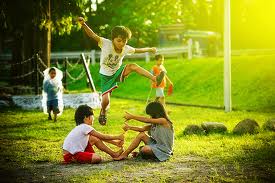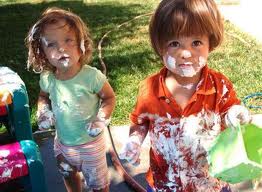This is one in a series of posts from guest bloggers. This one from Michael Follett, CEO at OPAL Outdoor Play and Learning, who we are working with to develop our range of outdoor play equipment. In this first blog from Michael he looks at why play for children is so important.
What is play and why is it important?
Michael Follett BA Hons Education, PGCE Director, OPAL Outdoor Play and Learning CIC
‘Play is what I do when everyone else has stopped telling me what to do’. Unknown child
To many adults children’s play means messing about, letting off steam or wasting time between more important things, however we know that in mammals, the more intelligent the species the more important play is to their development. As an intelligent species why have we evolved with such a natural instinct and drive to play? Maybe we do not play because we are intelligent but we are intelligent because we play.
Play is hard to describe, adults often use descriptions of what play feels like such as ‘play is fun’ or descriptions of what we do when we play, such as ‘play is using your imagination’ or ‘play is joining in games’. The reason play is hard to describe is that it is not any particular activity, it is a state, play is whatever is done playfully. Playfulness implies choice, creativity, experimentation, flexibility. Play has to come from the child, be driven by what interests them and be directed by them. Our ability to develop intelligence through play and to enjoy the process is one of the most universal and valuable human characteristics.
Understanding the world is a hugely complicated task and then communicating with each other is even more complicated. Children must first gain first-hand sensory experience of the relationship between their bodies and the external world. To be able to communicate they then have to be able to represent the world around them with symbols; these symbols include words, writing, pictures and video. It is easier to understand this if we think about colour. If we wanted a child to learn about ‘red’, we would have to start by giving the child lots of experience of things that are red, then getting them to associate the colour they saw with the spoken word ‘red’, this is a spoken symbol, much later we might get them to associate the colour with the written symbol. Even with such a simple piece of learning play would be important. The child will develop a theory about what red is and then test it out. This will include inventing nonsense and reversal; once you know what red is, then pointing to something blue and saying ‘red’ is funny. An appropriately horrified and humorous playful reaction from an adult would reinforce the child’s theory and satisfaction in knowing what red is.
Learning a colour is fairly simple. How does a child learn to understand concepts like fast and slow, hard and soft, friendship and sharing, safe and risky? The answer is they need to try things out, experiment, get things wrong, repeat, think, do random things, enjoy, feel and respond. Every time they try something through play they find out a little bit more about the world and their place in it; it’s like fitting in another piece of a big jigsaw puzzle. Adults may not be able to make sense of what is going on in play; just as with a big jigsaw puzzle, the picture on each piece does not make sense until many parts come together.
So trust your child’s playfulness, give them rich and varied opportunities to lead play themselves and for you to watch listen and follow their lead. Don’t worry if you don’t know what they are learning, a child never plays without finding out something.
This is a short video from Love Outdoor Play promoting the importance of playing outside for children, which we’re tacking on the end of this blog as it seems quite relevant, hope you enjoy it.
Author: Bob Bounce

